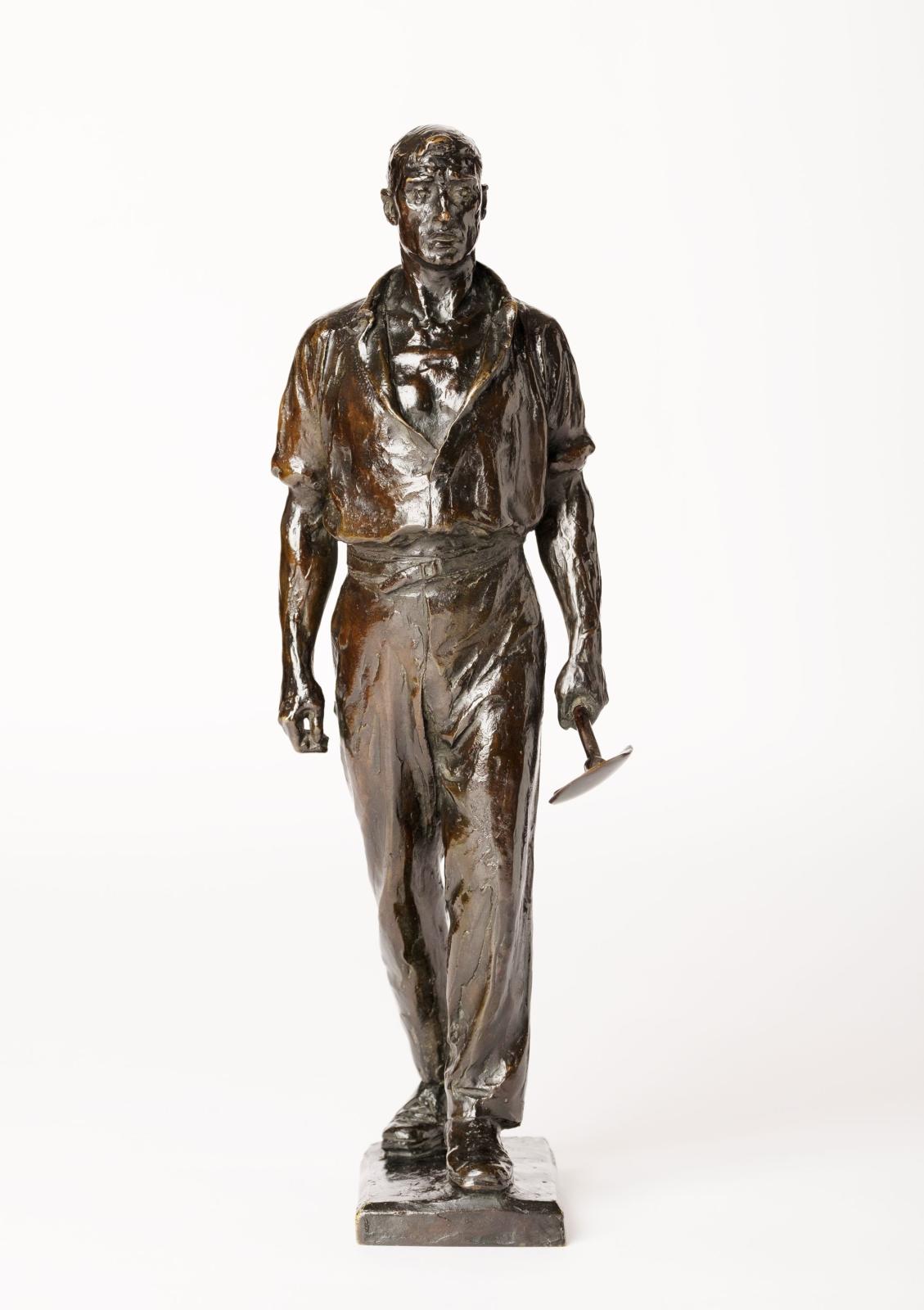



artist
Max Kalish was born in Poland in 1891. His family immigrated to the United States when he was three. Settling in Ohio, Kalish showed great promise as an artist in public school and left at the age of 15 to enroll in the Cleveland Institute of Art, where he studied was awarded the first prize for life modeling. After graduation from the Institute, Kalish went to New York City where, for the next two years, he studied under some of the more famous sculptors of the day including Isidore Konti and Herbert Adams. With the financial and fundraising help of his brother, Abe, in 1912 Kalish moved his studies to Paris. There he enrolled in the Academie Colarossi, a school favored by many American artists, and studied under Paul Bartlett. The following year he enrolled in the prestigious École des Beaux Arts, and that year two of his portrait busts were accepted at the Paris Salon.
Kalish returned to the U.S. and became involved in a project assisting Isidore Konti with the plasters for the Column of Progress at the San Francisco Panama-Pacific Exposition. With the money he made from this project, Kalish repaid the loans for his studies in Paris and returned to Cleveland. In Cleveland he received commissions for portraits of the Mayor and two US Senators.
In 1916, Kalish joined the army and sculpted a series of 1/3 life-size figures of soldiers, which were eventually cast in bronze. Kalish returned to Paris in 1920, where he would spend 6 months of every year for the remainder of his life. While there Kalish became fascinated with the subject of laborers, and in 1921 he modeled the first of the sculptures for which he would eventually be famous. His model for this piece, The Stoker, was a worker in a Cleveland blast furnace.
During Kalish’s stay in Paris the following year, he saw the work of the Belgian artist Constantine Meunier (1831-1905), who modeled European laborers decades earlier than Kalish, and decided that he would continue to sculpt laborers at work. In 1925 Kalish won the First Prize at the Cleveland Artists and Craftsman exhibit for four of his works (three of which were laborers). The Cleveland Museum of Art purchased one of these works, a marble torso of a nude. After this, Kalish’s career took off, and he produced many bronzes of laborers in the following years. In 1928 he received a commission for a monument of Abraham Lincoln for the City of Cleveland. In 1932 he moved his studio from Cleveland to New York, where he could receive more exposure and where it was easier to get commissions. He was made an associate of the National Academy of Design in 1934 and was later inducted into the National Sculpture Society.
Kalish continued to model and cast bronzes of laborers throughout his career and when the Second World War broke out he was asked to model and cast forty-eight 1/3 life-size figures consisting of President Roosevelt, his entire cabinet, as well as several prominent people involved with the war effort for the Museum of American History. The schedule for this monumental undertaking was grueling and just as he was completing this project Kalish was diagnosed with incurable cancer. Although very ill he continued to oversee the casting of this, his final work, and lived to see its completion. Max Kalish died in New York City on March 18th, 1945 at the age of 54.
Description
The first of Kalish’s laborers, The Stoker, 1921, was modeled on a Cleveland blast furnace worker at the suggestion of a friend, and, with its success, began a long association with the working man as subject. Among Kalish’s many other labor subjects, Laborer with Shovel is a rare model not often seen on the market. Kalish did not number his works and he did not have a set number of works done in an edition for any particular model. However, it is noted that his editions did not usually go past 6 casts. There may have been less of this model due to its rarity.
For those that love this sculptor’s work, its understood that it’s a metaphor for pride and admiration for an era in American history where our cities, progress, and prosperity were carved out by the common laborer. Kalish approached the labor subject not as social comment but simply as capable, strong can-do men that toiled to earn a day’s pay and build a future for a nation on the rise.
Executed at the height of the series, Laborer with Shovel has a stride of dignity and purpose that speaks of strength and resolve. Some of Kalish’s laborers are in dramatic stances in full use of their tool. Here we see the model is depicted in motion not in toil but either to or from his place of work. Kalish comes out of strong French influences such as Rodin, Meunier and Dalou but he is never mistaken for anything but American with these works. It has been noted that Kalish did not have a Communist or Socialist bent to his message. In 1926, the Brooklyn Eagle said of Kalish’s laborers “The American laborer as seen by Mr. Kalish is alive, robust and handsome, evidently well paid and animated with the knowledge that he need not . . . remain in that class should his ambition dictate otherwise.”



